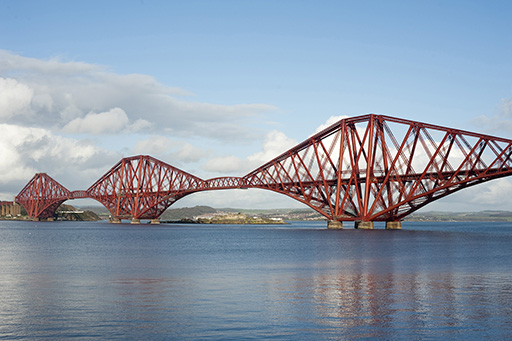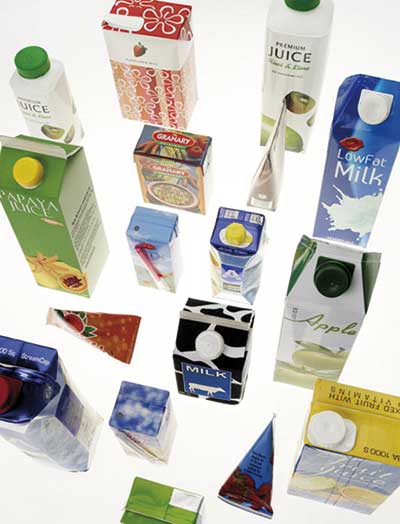Pre-Reading
Pre-Reading Activity
Discuss the following questions with a partner.
- What does the word aesthetics mean? How important are they to you?
- How would you define good design?
- What are the steps to designing a product?
- What problems might engineers face while designing products that are both beautiful and effective?
Reading 2: Design Beginnings
Design Beginnings
As soon as you read the word ‘design’ you probably formed some idea of what you think it is. It is a word that can be used in many ways and can mean different things to different people. Even in a specialized discipline like design engineering, there are many different definitions and types of design activity. To complicate things further, design can be a verb or a noun: you can ‘design a design’. So it is important to remove as much confusion and contradiction as possible when discussing anything containing the word ‘design’.
This chapter introduces design in a particular way based on both theory and practice. This section starts by discussing a few characteristics of design that you may not have come across before.
2.1 Design is more than aesthetics and appearance
It can be easy to think of design as only styling, fashion or the appearance of objects. You only have to look at the variety of similar products in shops to see that some products have an obvious focus on appearance. External variations in kitchen appliance design often take place without actually changing the underlying product, in order to remain up-to-date or fashionable, or to fit in with other consumer demands (Figure 4).

In this chapter, design is presented as much more than this – as something that is valuable as both a process and the outcome of that process. Good design brings aesthetic and functional elements together to create something that is greater than the individual parts. Many designers would argue that good design embodies both – the aesthetics are pleasing because of the utility, and the function is expressed in the appearance.
Consider bridges, for example, where the function of the bridge often relates directly to the shape of it – how the bridge looks is related directly to how it works. The Forth Rail Bridge in Scotland is over 100 years old and fulfills its function by supporting very heavy moving trains using three balanced cantilevers, which hold the weight of the bridge. These cantilevers give the bridge its distinctive shape, and this shape is also aesthetically pleasing – it looks attractive (Figure 5). People have written books, poems and songs about this bridge – and it has also appeared in film and computer games! The effect of this piece of design engineering goes far beyond solving the single problem of crossing water.

However, good design is more than simply looks and aesthetics – the best design engineering is a result of blending both the aesthetic and the functional. As you will see later in the chapter, this comes from blending different types of thinking and approaches in the process.
2.2 Design is more than products and objects
Some products are not much use on their own: they require other elements around them to enable them to work. For instance, your mobile phone wouldn’t be much use without a whole range of supporting products and systems to enable it. These other elements are also designed.
Consider the design of the electricity supply system. In particular, think about the infrastructure that supports it (the power stations that generate the electricity, the wires that transport it, the substations along the route), the individual products used to access that system (plugs, wiring, light fittings), and then the service provided (energy companies, maintenance agreements). It would not be possible to design one without the other – the products depend on the system of electricity supplied, and the supply of electricity depends on the demand created by the products (Figure 6).

Behind this simple relationship is an entire range of products, specifications, systems and services that are all required to ensure the consistent supply of electricity. Even the way in which these elements are used, a process, can be designed. These terms are defined below.
Box 1: Design engineering terms
Product – an object created to fulfill some function or purpose.
Specification – a detailed description of the design and materials used to make something.
Process – a series of events that are performed in sequence in order to fulfill some overall aim.
Service – an activity or event provided in order to fulfill or support some specific need.
System – a collection of elements that connect to form a coherent group that serves some purpose or function.
When the focus is only on the product itself, other elements around a design can sometimes be forgotten. Many design engineering companies now actively look beyond their products to design systems and services as well. For example, some lighting companies will now sell a ‘service to provide light’ rather than just individual light fixtures. In doing so, they provide a service to maintain (and even sometimes operate) a lighting system.
Design is more than simply creating a product – services, systems and processes can also be designed. Even when a design is simply for a product, the chances are it will require these other design elements to support it.
2.3 Design is not just for designers
Design takes place at every single stage in any project. Even the smallest design sub-task can be approached creatively, often leading to significant innovation and improvement when it is scaled up. In many world-leading product design companies, the design of apparently insignificant elements and components is given as much attention as the overall design because this can lead to other benefits.
In some cases the smallest components may have a significant effect. Take the children’s suitcase company, Trunki, for example. Their suitcase is designed for children to ride as parents pull it behind them. They’ve made an internationally successful product, but it failed to get funding on the BBC television program Dragons’ Den due to the strap breaking during the demonstration. Despite this failure, its designer continued with the product, realizing that the problem could be overcome through further design and testing (Figure 7). The suitcases are now widely available.

This is an extreme example of a small detail having a large consequence, but the lesson is important – you never know what detail might matter most. The principles of design can be applied usefully to all stages of a project and even beyond. The smallest detail in a project needs to be designed just as much as the overall project.
2.4 Design is much more than just solving a single problem
Problem solving is a significant motivation for design – you come across a problem and you want to solve it. But how do you know you are solving the right problem? What if you solve the original problem but create another problem? Worst of all, what if solving a problem actually makes things worse?
A large part of good design engineering is about understanding and selecting the right type of problem to solve. This step of understanding the problem is a crucial first step in the design process. In fact, the best design is about carefully shaping and framing problems to generate a solution that improves the entire system. In some cases, the solution that comes from the design process can have very little to do with the original problem. As Nigel Cross says in his book Design Thinking (2011), the best designers give the client something they didn’t even know they wanted.
Good examples of this approach are the design innovations made by the company Tetra Pak (Figure 8). Tetra Paks are environmentally-friendly cartons made of paper, plastic and aluminum. Each of these elements of the design solves multiple problems at the same time to create an effective product; for example, the openings have to be reinforced for strength so they don’t break during transport, but they also have to be easy to open. A potential solution to one of these conditions might lead to problems with the other, so solving both problems at the same time becomes important.

In many ways, solving individual problems is relatively easy if the resources are available. What is often far harder is solving the right problems with the best solution(s). Part of the skill of a design engineer is not only defining problems to solve but also working out how those problems might be solved. Being able to see problems from a range of different viewpoints is an important skill for the designer.
Design is not simply solving a problem – it is about selecting and framing the right problems. The best design goes beyond simple problem solving and creates something new.
2.5 Design is about thinking around the object
There is another way of thinking about design that makes it much more interesting and challenging. The job of the designer (and especially the design engineer) is to try to think of the things that no one else thinks of. Designing involves creating something new, and this means that it will have new consequences. Designers consider these consequences as well as the design itself because they know that this will lead to a more successful outcome – problems can be imagined before they become reality, and other opportunities can be taken advantage of.
Consider a product being designed for an extreme or challenging environment. If only the product itself is considered and the context is ignored, it’s very unlikely the product will succeed. For example, in offshore design engineering, the nearest materials and emergency support are not very easy to access (Figure 9), meaning that the installation and operation of products really matters. The designer has to think about many different aspects of a design at the same time – installation, repairs and maintenance, and removal– in addition to the equipment itself. When only the product itself is considered this almost always leads to other problems in the wider system, leading to costly failures and extended repair times.

Design is not simply thinking about an object, it considers what is ‘around’ the object – the context, operation, repair, or replacement. The best designs consider more than simply a static object.
2.6 Design is …
Some of the ideas presented on previous pages might be new to you and you might consider design in a slightly different way after thinking about them. A definition of design is not provided here because it is better for you to start developing your own understanding of it. Before moving on, there are a few last characteristics of design for you to consider.
Firstly, design is a process. It is something that people do with a specific aim or goal in mind. The process may not lead to a single perfect solution and part of that process might be to define what ‘solved’ or ‘success’ means. But it is the journey that makes the difference. If you knew where the process was going to end up, then you wouldn’t need to design in the first place.
Secondly, design makes use of creative and analytical attitudes, approaches and skills. Using only creative methods or only analytical methods in a design process rarely leads to successful projects. But by applying both, the design engineer can draw on the most effective methods to approach complex challenges.
Finally, design has a purpose and creates change. It is an inherently practical pursuit – it is not only theoretical or imaginary. The output from the design process is the creation or change of some aspect of the world around us.
As you work through the rest of the chapter bear these three ideas in mind. You are expected to start to become a designer. In doing so you will be engaging in an analytical and creative process – all with a view to making a change in the world around you.
When you study and practice design, you are exposed to many ideas of what design engineering is. Many of the examples might be familiar to you, but some might be quite new.
This is the real value of good design engineering: because it can be applied creatively in different ways to any project in order to drive innovation.
Reading Comprehension
Choose the best answer to the following questions.
- What is the purpose of the second paragraph of this reading?
- to explain the passage’s organization and purpose
- to introduce ideas about design that might be new
- to describe important design theories and activities
- to summarize the main points of the reading
- Which of the following is most clearly an example of aesthetic design differences?
- designs that respond to different market drivers
- designs that function similarly but look differently
- designs that complete the same task in different ways
- designs that look expensive and innovative
- Why does the author discuss electricity in section 2.2?
- to discuss the design of electrical systems
- to detail the many ways that electricity is in demand
- to show engineers’ role in designing electrical systems
- to explain that cellphones rely on larger systems
- What is a design specification?
- a list of the steps required to make something
- the group of activities needed to support the product
- an outline of the exact design and its requirements
- the set of materials used to make a product
- Which of the following best describes the author’s attitude towards design?
- Good design must consider both an object’s look and function.
- The systems built around products are the most important.
- Design requires specialized skills and training to be successful.
- Minor details in the design will not significantly affect the product.
- According to the author, the first step in the design process is to…
- learn about the materials and processes needed
- analyze the surrounding systems and context
- recognize the importance of having a designer
- understand the problem that’s being solved
Answer the questions in your own words.
- How might the author define “design”?
- Why does the author give the example of the Trunki suitcase?
- Why are Tetra Paks a good example of solving multiple design problems at the same time? What is another example of this from your experience?
- What problems might arise if a designer or engineer does not consider the larger context and systems around a product?
Vocabulary Practice
Complete the sentences below using the words in the box. You may need to change the verbs to fit.
|
aesthetic coherent contradiction expose external generate inherently pursuit reinforce route |
- The paint will be _________________________ to snow and rain, so it must be able to maintain its appearance of years of intense exposure to the elements.
- The bank gave them a loan because their business plan was organized, well-thought out, and _________________________.
- Solar panels _________________________ electricity.
- In _________________________ of a successful design, the team worked tirelessly for months.
- The apparent _________________________ between the product’s description online and its actual appearance were causing customers to leave negative reviews.
- A(n) _________________________ review team was chosen to give unbiased ratings of all the designs and chose the best one.
- Because of the snow, people were advised to use an alternative _______________.
- Few designs are _________________________ bad, but they may not be the most elegant solution to the problem.
- A products’ _________________________ might be just as important as how it functions.
- The company tried to _________________________ good working habits by rewarding those who come to work early.
Discuss the questions below using the academic vocabulary words.
- Are aesthetics important to you when you buy a product? Does the type of product make a difference to you when you think about this question?
- What contradictions have you noticed in the way society treats young adults?
- What route do you normally take to get to class?
- How should companies generate interest in their products, for example new clothes or technology?
Reading Discussion
Discuss these questions with your classmates.
- What example in the reading do you find the most interesting?
- The author listed several things that design is NOT. Which do you think is the most important?
- In the conclusion, the author says design is “inherently practical” Do you agree? Explain.
- Has this reading changed the way you view the objects around you? If so, how?
- What do you think the next reading will be about?
